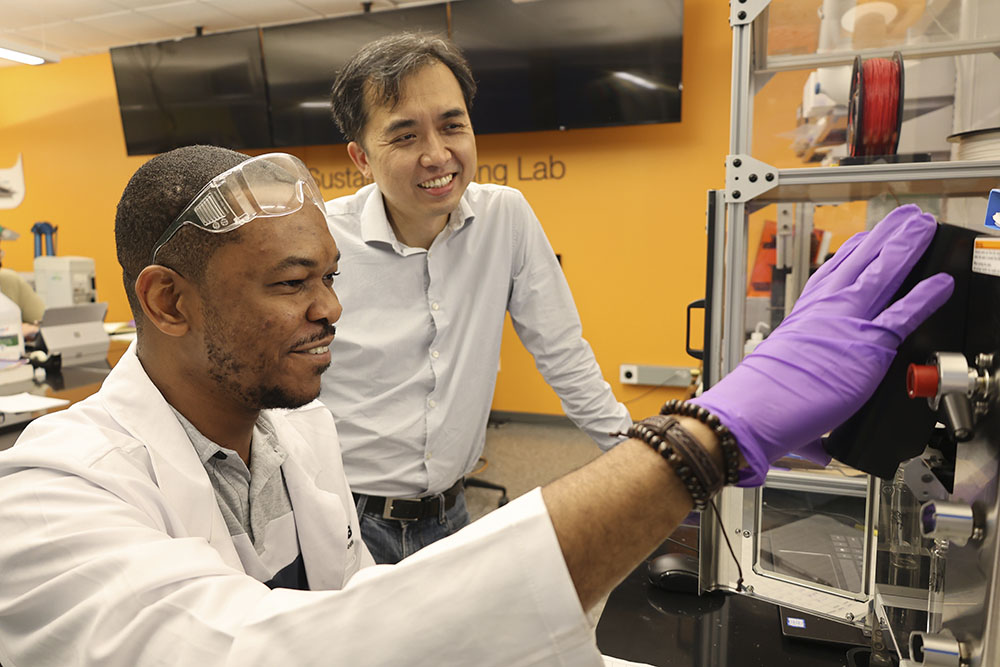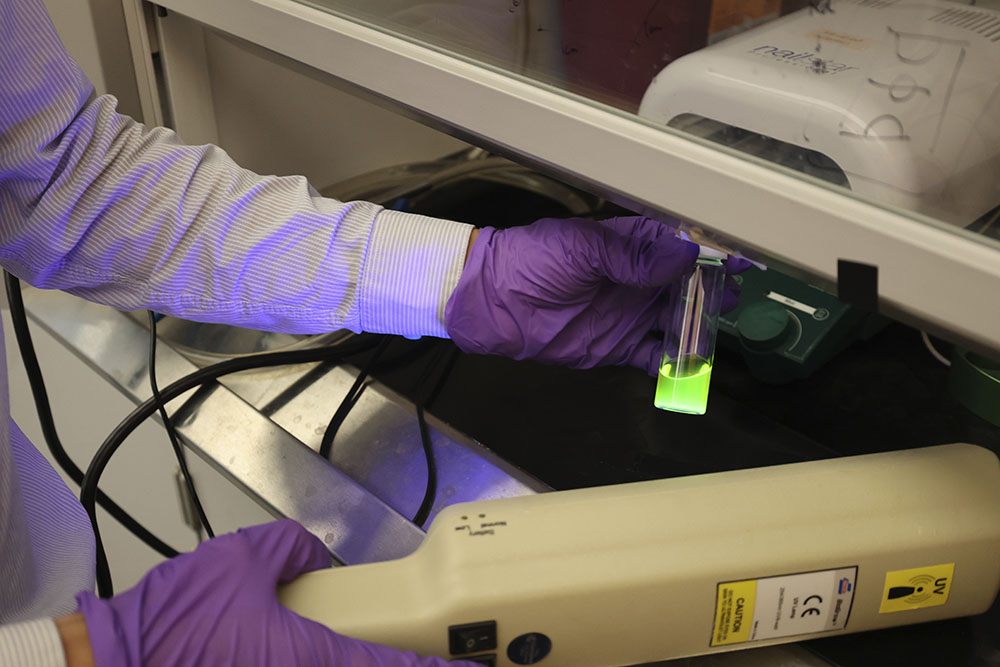LSU’s Lawrence Receives NIH Grant to Improve MRI Imaging

August 23, 2023
BATON ROUGE, LA – In five years’ time, LSU Chemical Engineering Assistant Professor Jimmy Lawrence’s current project may enable patients to benefit from metal-free MRI contrast agents that are safer, more reliable, and chemically versatile. Indeed, these new contrast agents could prove crucial for the diagnosis and monitoring of damaged blood vessels, small tumors, and abnormal tissues.
The work is being funded by a nearly $2 million NIH MIRA R35 (National Institutes of Health Maximizing Investigators’ Research Award for Early Stage Investigators) grant. This milestone marks the first-ever grant of its kind for the LSU Cain Department of Chemical Engineering and a significant accomplishment for the College of Engineering, as two such grants have been awarded during the same funding cycle.
The aim of the project is to research and replace current gadolinium (Gd)-based MRI contrast agents with highly biocompatible synthetic polymers with precise structures, resulting in an overall safer and more effective imaging process.
“For patients with renal diseases, pregnant women, and small children, this could translate to reduced risk during MRI scans,” Lawrence said. “For the broader patient population, it can lead to improved accuracy in diagnosis and potentially lower healthcare costs. Synthetic polymer-based MRI contrast agents offer numerous advantages over traditional Gd-based agents. They eliminate the concerns of gadolinium deposition and related health risks. In 19F MRI—a precise medical imaging technique—the contrast agents allow for easy detection of non-naturally occurring fluorine, enabling straightforward quantitative analysis and setting them apart from conventional agents.”

In the initial phase of the project, Lawrence and his student, Nduka Dennis Ogbonna, will explore the impact of molecular building blocks on the performance of the polymer-based MRI contrast agents. Specifically, they will be examining the size, shape, composition, and topology of these building blocks on the agents’ structure, solution properties, and Nuclear Magnetic Resonance (NMR) dynamics.
“Upon gaining these insights, we will synthesize and test shape-defined designer polymers containing precise amounts of water soluble and fluorinated groups,” Lawrence added. “Promising candidates will proceed to clinical studies in collaboration with LSU Health Sciences and undergo further studies with our research collaborators.
Through the development of a safer and more reliable MRI contrast agent, Lawrence said his team is pushing the frontiers of materials and medical science, contributing to a future where diagnostic accuracy and patient safety are substantially enhanced. Furthermore, he believes this project underscores the pivotal role that interdisciplinary collaboration and sustained investment in research can play in shaping the future of healthcare.
Related Story: LSU Mechanical Engineering’s Gartia Receives Nearly $2M National Institutes of Health Award
Like us on Facebook (@lsuengineering) or follow us on Twitter and Instagram (@lsuengineering).
###
Contact: Joshua Duplechain
Director of Communications
225-578-5706
josh@lsu.edu